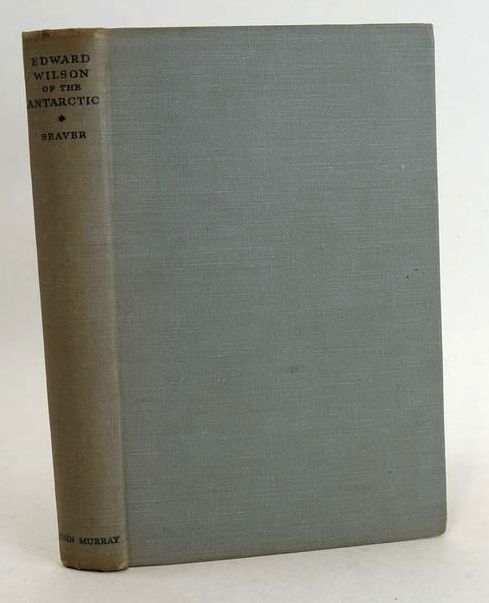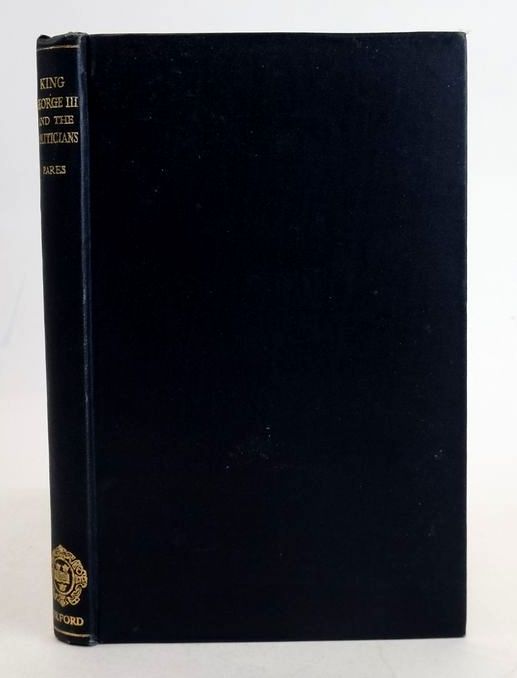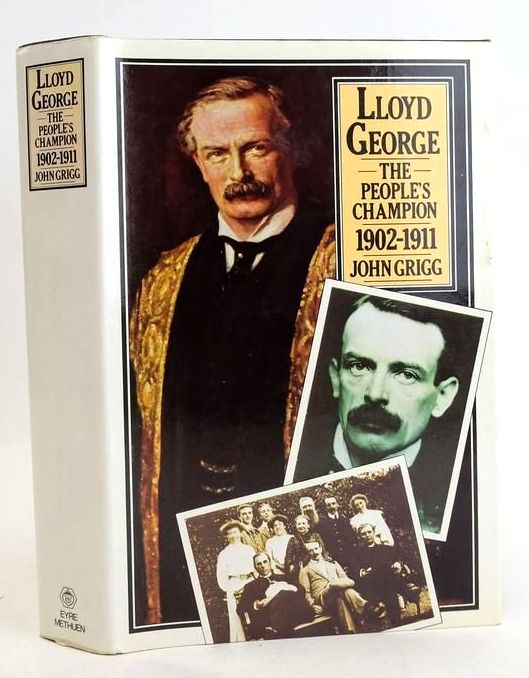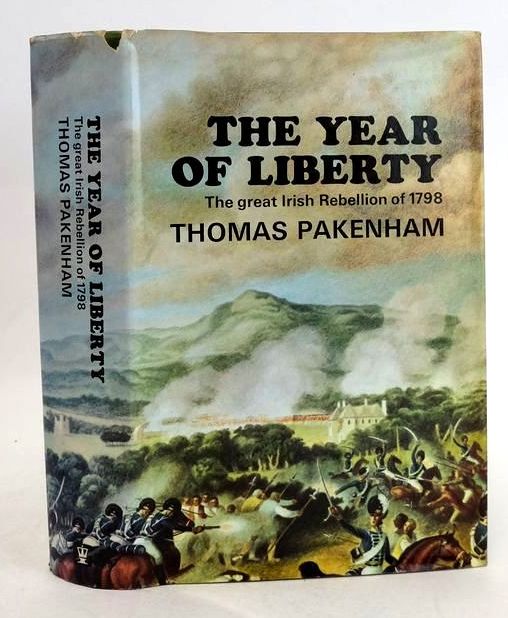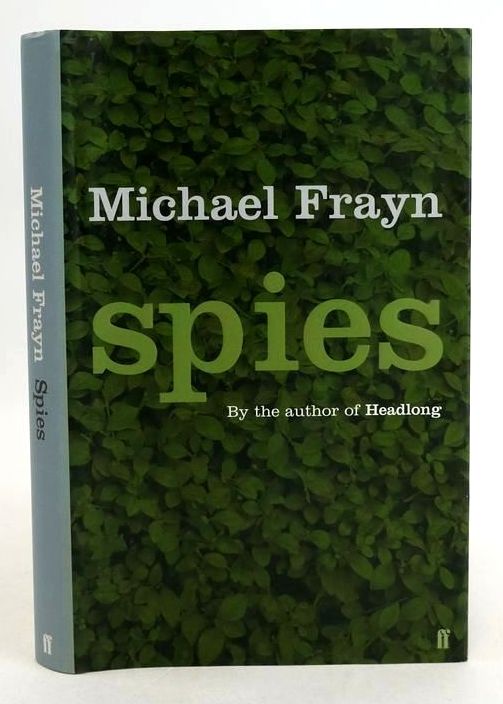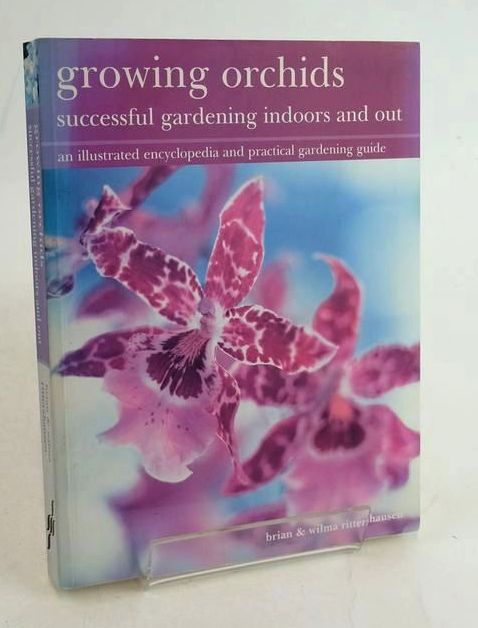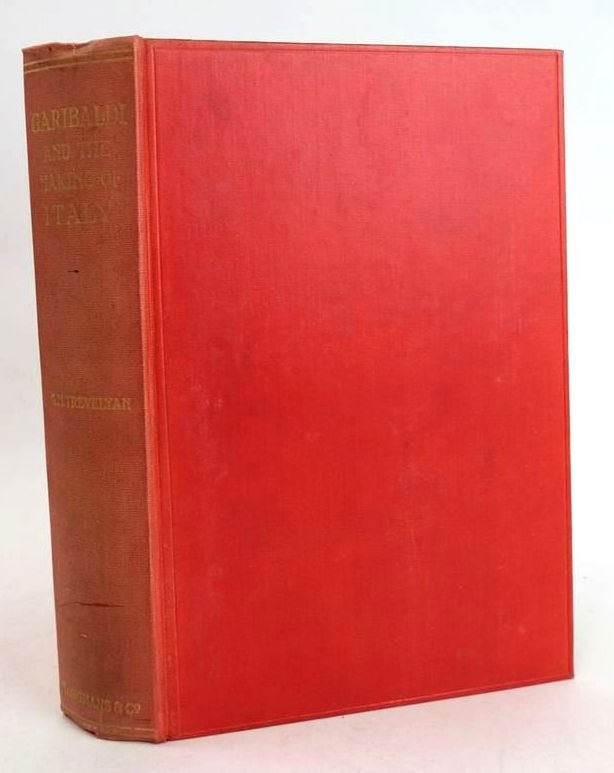The Savery Sisters - Children of the vicarage
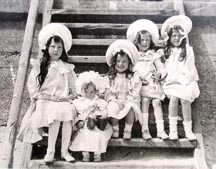
Left: The Savery sisters, Winifred, Doreen, Christine, Phyllis, and Irene, as neatly haloed as a fond parent could wish (about 1906)
Even so, times were hard, and the oldest daughter, Winifred, wrote an unpublished account of how the fire was set ablaze in the hearth and the girls dressed in church finery for a visit from the bishop's wife. When the visitor sent word that she would not be there, the fire was raked out to save coal, the Sunday dresses were hung up again, and a special treat (oranges to be sucked through sugar cubes) was distributed. Inevitably, the distinguished visitor arrived after all to be greeted by sticky girls in a chilly parlour!

Right: Winifred's "Forbidden Doors" received mixed reviews. Both the Times of London and the New York Times
thought she bit off more than she could chew.
The Reverend Savery was a persistent note-taker, and Winifred inherited a suitcase full of his notebooks crammed with tiny copperplate handwriting, among them a proud father's 'autobiography' of Winifred that began with "my first bath." One of Christine's letters remarked that Winifred was "still writing at age 82 and had been at it since the age of 3" At eight, she edited a family magazine by "writing in the blank spaces of a church leaflet... and featuring a story by Homer and Hans Christian Andersen."
Constance Winifred Savery (1897-1999) was Winifred at home, but Constance on the covers of over fifty books, beginning with Forbidden Doors in 1929 and ending with "Emma" in 1980. Her first story saw print in 1913 and her last poem in 1993. The Memoirs of Jack Chelwood, which she considered to be her best novel, appeared posthumously in a private printing in 2004. She incorporated into "Jack" a three-line chant that she wrote when she was only eight, so that eventually, something she wrote in every decade of the 20th century was published.

Her books are distinguished by excellent dialogue, lively believable children, and endings that favour reconciliation over retribution. She had the novel talent of making good people interesting, especially in Green Emeralds for the King (1938), Enemy Brothers (1943) and Blue Fields (1947). She frequently incorporated twins (and several times, triplets) into her stories, explaining to a correspondent "... it is often more convenient in a story to have characters of the same age, rather than those with a big gap between their ages. I had a cousin who was six weeks my junior, and I looked down on her from a measureless height of superiority." A list of all of Winifred's books may be found at base of this article as sourced from CBandM Yahoo Group.
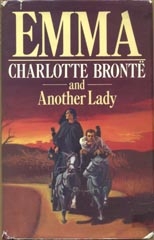
Christine Charlotte Alexandra Savery (1902-1997) was less prolific an author than Winifred. Her second book, The Raven Flew North (1950) published by Stirling I mention particularly so that I can quote from the publisher's flyleaf: "Parents are advised, when giving their children this book, to arrange beforehand a definite understanding as to what constitutes a reasonable bedtime hour."

Below right: The Raven Flew North was by 'Christine.' As a rule, publishers used 'Chris.'
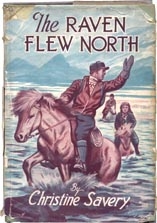
Like Christine, Irene Edith Savery (1899-1960) inherited her mother's evangelical fervour and, as previously noted, followed it across the world. She was, according to Winifred, "...able to write, but chose not to." She did receive a one-pound prize in 1959 for an article entitled "Unfair to Tommy." On April 7, 1960 , Winifred wrote in her work diary, "Irene died, carissima, carissima." Irene was the first of the sisters to die and the only one that did not live beyond 70 years of age.
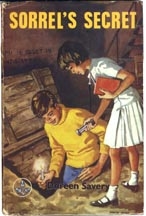
Writing for Victory Press presented some difficulties. They printed these instructions for prospective authors:
- The story must be original and fiction.
- It must be written for children (boys, girls, or both) of any age group between 8 and 16.
- There must be a clear explanation in the story of the way of Salvation and, if the author so desires, simple Christian teaching of a non-denominational character may be included.
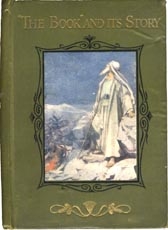
Right: Papa John Manly's "The Book" is full of archeology and praise
for Bible translators and Protestant saints.
Phyllis Evelyn Mary Savery (1901-1978) was in poor health throughout a long life. A typical entry in Winifred's diary reads:"Jan. 18-about Feb. 17 [1957]. Phyl ill-influenza and laryngitis. Again very difficult to work." In addition to nursing her, Winifred often typed her many short stories and articles, which were published in a wide variety of periodicals. The diary mentions thirty-two pieces typed by Winifred between 1950 and 1965. Presumably Phyllis wrote others. Here, as a sample, are her titles for 1955: "Daffodil Country" "Letters of Gold" in the British Messenger; "Primrose Country" in the Marborough Times; "Wild Trehern Moor" in the Lily Library.
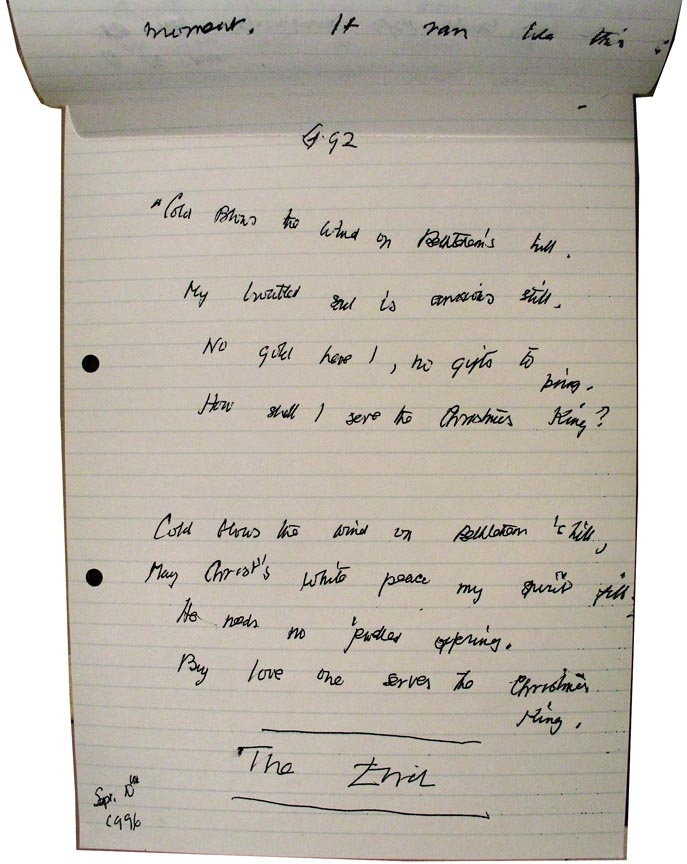
When Winifred was 98 years old, she picked up the manuscript to The Quicksilver Chronicles, a book she began in 1918 and had been altering to suit prospective editors for decades. No longer able to move except in a wheelchair, her eyesight deteriorated so that she could no longer read either what she was writing or her previous draft, she completed a new version of her story in three manuscript books, a total of 692 pages. It was a remarkable triumph of the will and a fitting climax to her career.
Left: Winifred's "Quicksilver Chronicle" ends with a carol, "Cold Blows the Wind on Bethlehem 's Hill. She finished it fifty-one days before her 99th birthday.
Constance Savery Bibliography - (sourced from CBandM Yahoo Group)
Here is a bibliography of the longer works of Constance Savery
(1897-1999). Indented titles are translations or new editions with a
change in content. A second date after the first indicates a recent
reissue by a new publisher. Most reprints and paperback editions are
not listed.
Books
All Because of Sixpence: 1961
Bishop Guy Bullen, 1896-1937 [biography]: 1948
Blue Fields: 1947
The Boy from Brittany: 1957
Breton Holiday: 1963
City of Flowers: 1970
Danny and the Alabaster Box: 1937
Dark House on the Moss: 1948
> Das düstere Haus am Moor; in German: 1950
The Drifting Sands: 1971
Emma (by Charlotte Brontë and Another Lady): 1980
> Emma (by Charlotte Brontë en een onbekende); in Dutch: 1981
> Emma (by Charlotte Brontë y otra dama); in Spanish: 1982
> Emma (by Sharlotta Bronte and Another Lady); in Russian: 2001
Enemy Brothers: 1943, 2001
Five Wonders for Wyn: 1955
Forbidden Doors: 1929
> Tenthragon: 1930
Gilly's Tower: 1969
Four Lost Lambs: 1957
God's Arctic Adventurer: The Story of William Bombas [biography]: 1973
The Golden Cap: 1966
The Good Ship Red Lily: 1944
> Flight to Freedom: 1958
Green Emeralds for the King: 1938
> Emeralds for the King: 1945
> Konungens smaragder; in Swedish: 1947
In Apple Alley: 1958
Joric and the Dragon: 1964
Lavender's Tree: 1969
> Der Himmelsbaum; in German: 1972
Magic in My Shoes: 1958
> Die verzauberten Schuhe; in German: 1963
Meg Plays Fair: 1953
> Gro er real; in Norwegian: 1956
> Die Kampfhähne von St. Marvyns; in German: 1960
Memoirs of Jack Chelwood (50 copies privately printed in 2004)
Moonshine in Candle Street: 1937
Nicolas Chooses White May: 1930
No King But Christ (a play): 1976
Pippin's House: 1931
> Pippins Hus; in Danish: 1936
Please Buy My Pearls: 1965
The Reb and the Redcoats: 1961, 1999
Rebel Jacqueline: 1960
Redhead at School: 1951
The Royal Caravan: 1963
> Campingvognen; in Norwegian: around 1975
> Husvagnen som fick stanna hemma; in Swedish: 1975
The Sapphire Ring: 1969
The Scarlet Plume: 1953
The Sea Queen: 1965
> Båten är min; in Swedish: 1975
> Sjøløven; in Norwegian: 1975
The Sea Urchins: 1959
She Went Alone (Mary Bird of Persia, 1859-1914): 1942
The Silver Angel: 1968
Sir Dominic's Scapegrace (by 'Elizabeth Cloberry'): 1947
The Strawberry Feast: 1967
Tabby Kitten: 1956
There Was a Key: Stories for Girls: 1930
Thistledown Tony: 1957
Three Houses in Beverley Road: 1950
> Wer spielt mit Benjamin; in German: 1959
To the City of God: 1958
> Ein Schiff fährt nach Antiochien; in German: 1960
> Vers la Cité Dorée; in French [Swiss pub.]: 2006
>Vi rømmer; in Norwegian: 1959
Up a Winding Stair: 1949
Welcome, Santza: 1956
The White Kitling: 1962
Yellow Gates: 1935
> Peter of Yellow Gates: 1938
Young Elizabeth Green: 1954
Stella and Rose's Books would like to thank Eric Schonblom for contributing this Article and Bibliography and for his kind permission to publish it here.
(Published on 1st Oct 2013 )


